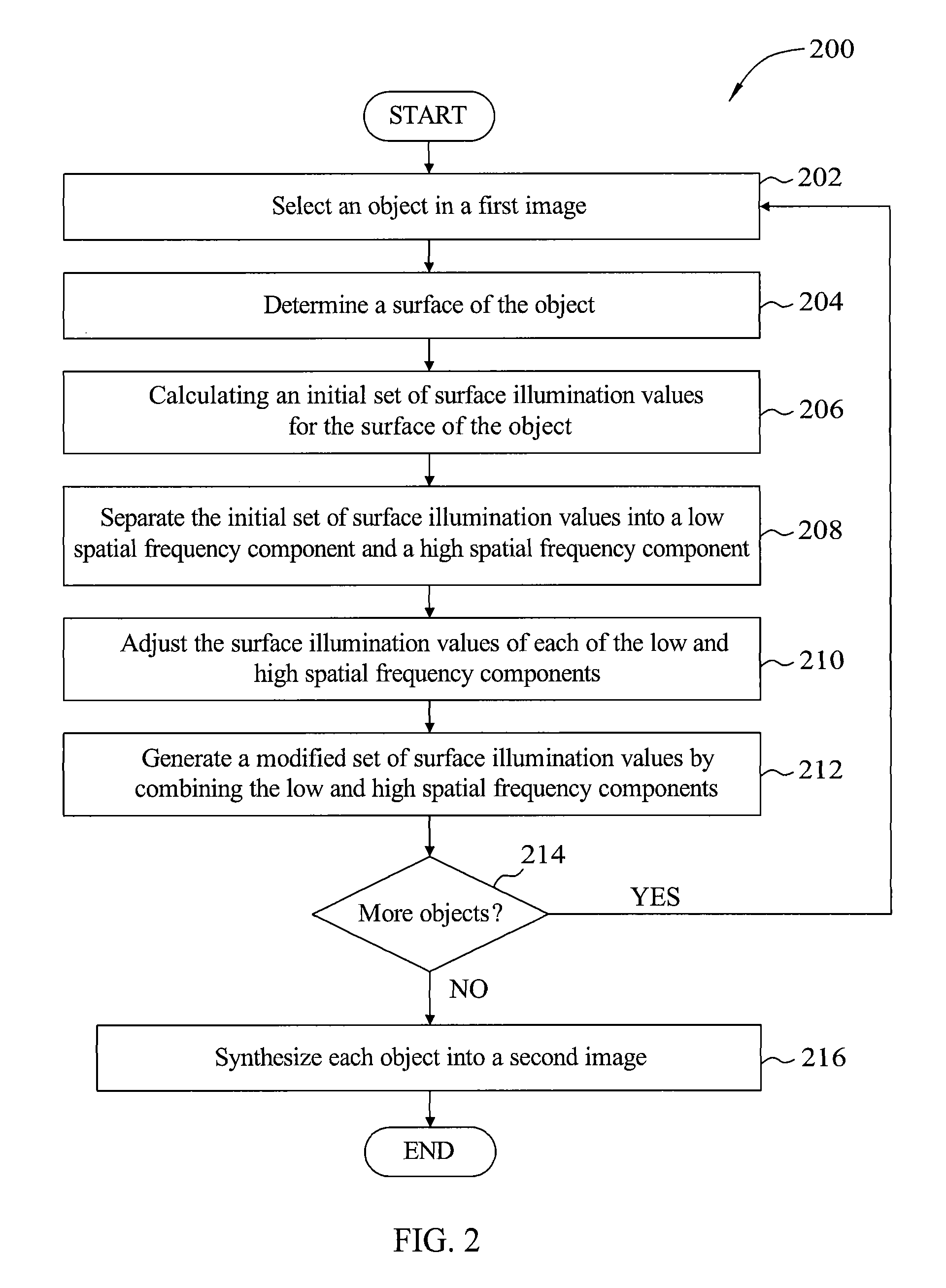Tone mapping for motion pictures
a motion picture and tone mapping technology, applied in the field of computer graphics, can solve the problems of preserving the beauty of sunset, a particularly difficult problem to solve, rendering images and real images captured on film, and preserving visually important features, so as to reduce the effect of jarring low frequency effects in an animation sequence and halo artifacts around objects
- Summary
- Abstract
- Description
- Claims
- Application Information
AI Technical Summary
Benefits of technology
Problems solved by technology
Method used
Image
Examples
Embodiment Construction
[0024]Embodiments of the invention provide a method for tone mapping images that is applicable for motion pictures. Each object in a still image (or in a single frame of an animation sequence) is tone mapped separately based on that surface of the object, thus eliminating halo effects or ringing artifacts around the object. Additionally, tone mapping on individual surfaces enables tone mapping to be performed to a sequence of animation frames without introducing low frequency artifacts, as is common with prior art approaches. Embodiments of the invention may be applied to tone mapping for motion pictures as well as to real-time tone mapping for video games.
[0025]FIG. 1 is a block diagram of a system 100 configured to implement one or more aspects of the present invention. System 100 may be a personal computer, video game console, personal digital assistant, rendering engine, or any other device suitable for practicing one or more embodiments of the present invention.
[0026]As shown, ...
PUM
 Login to View More
Login to View More Abstract
Description
Claims
Application Information
 Login to View More
Login to View More - R&D
- Intellectual Property
- Life Sciences
- Materials
- Tech Scout
- Unparalleled Data Quality
- Higher Quality Content
- 60% Fewer Hallucinations
Browse by: Latest US Patents, China's latest patents, Technical Efficacy Thesaurus, Application Domain, Technology Topic, Popular Technical Reports.
© 2025 PatSnap. All rights reserved.Legal|Privacy policy|Modern Slavery Act Transparency Statement|Sitemap|About US| Contact US: help@patsnap.com



